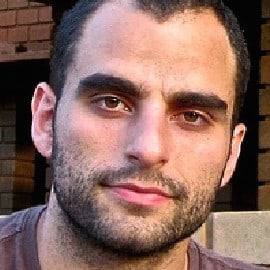From Beneficiary to Customer: 40K Transitions from School-building Charity to Edtech Social Enterprise
Kyle Poplin: What is 40K’s mission?
 Clary Castrission (left): 40K has two social enterprises in its fold: The mission of 40K PLUS is to provide access to learning in restricted environments around the world. 40K Globe’s mission is to inspire a new generation of social entrepreneurs through immersive learning experiences.
Clary Castrission (left): 40K has two social enterprises in its fold: The mission of 40K PLUS is to provide access to learning in restricted environments around the world. 40K Globe’s mission is to inspire a new generation of social entrepreneurs through immersive learning experiences.
KP: How did your interest in educating primary school-age children in India develop?
CC: As a law student over a decade ago, I was intrigued by the wicked problem of quality education in developing communities around the world. I spoke to a professor about how to get involved at the time, and he advised me to get over to the developing world and get my hands dirty. My co-founder and I went to India and were immediately blown away by the vastness of the country. Given the country’s incredible complexity, I have come to learn that what we call social enterprise, they call “life.” India is so big that it trains you to build ideas that can scale. Being very young and naïve at the time, we thought that the wicked problem of education in rural villages required building schools. It took five years to build the first school. Over that time, we learnt a lot about the education needs of the people we were trying to help as well as the key barriers that were preventing quality education from proliferating in rural areas.
We reinvented our model over the next two years and transformed from a school-building charity to an edtech social enterprise.
KP: How many schools do you run and students do you educate?
CC: Currently we operate 20 after-school centres for 1,100 children. It’s been a steady start whilst we’ve developed a version 1.0 of our technology solution. This year, we expect a further 3,000 children to be enrolled on the platform, and will be launching in Cambodia as well through a partnership with the Cambodian government and INGO Room to Read.
KP: So 40K has been converting from a charity model into a social enterprise. What are the advantages of the for-profit model in education?
CC: Firstly, I would not say that one model is categorically better or worse than another. However, from our experiences we have certainly started to notice some benefits of the social enterprise model, around meeting need and scaling. With regard to meeting need, our understanding is that development frameworks seek to achieve partnership between the organization and the people it’s trying to support. However, what I found with the charity model is that when you’re the organization with the chequebook, you inherently hold the power in that relationship. The charity has more power than the beneficiary. However, when you sell the service, the person you’re trying to assist is transformed from beneficiary to customer. In that relationship, the customer is empowered to make the choice. If they find your proposition valuable, then they will buy it. It has been our experience that since we started selling our service, rather than giving it away, we have become much more responsive to the needs of our customers.
With regard to scale, I believe that (being a) social enterprise can assist in longer-term financial viability. Fundraising places far too much stress on nonprofits, and the real losers can become the beneficiaries. I have heard far too often of good programs shut down (or not started) because donations were down one year. This is not good enough. If the beneficiaries become customers then they are in control of the perpetuity of the program. So long as it stays valuable and the customers keep paying, it stays running. That’s good for everyone. This assists in scaling as it doesn’t matter if you’re serving 1,000 kids or 1 million.
This then transforms the role of philanthropy. We see philanthropy as for-profits see investment. We endeavour to use it for scaling costs, capacity building and capital expenditure (in our case this is for our technology development). We do not seek to use philanthropy for running costs. The effect of this is that philanthropy affects pace of development, not day-to-day running.
KP: How far have you gotten in your transition?
CC: As a group, we are now approximately 62 percent funded by our business activities and 38 percent funded by philanthropy.
KP: What’s your target audience?
CC: For 40K PLUS, our target user is a primary-aged child in rural and semi-rural areas, typically attending government schools. They come from families who typically make their living from agriculture, quarry work or day-labouring, and earn between $3-$7 per day.
For 40K Globe, we currently work with undergraduate Australian students who are eligible to receive academic credit for completing our program. We are partnered to nine universities in Australia. We have also begun running a tailored program for MBA students.
KP: What are the various revenue streams you can utilize to make it profitable to educate children?
CC: Over the past five years as we’ve been developing 40K PLUS, we have been mostly focused on designing a product that is valued by our customers. Based on limited bandwidth in the startup years, the business model for our product has been the secondary focus. Our group model has provided us with enough funding to bootstrap our product development. That being said, since Version 1.0 was released and a product roadmap has now been built to take it to maturity, the business model has become a stronger organizational focus. We have started to see commercial opportunity in the key resources we’ve built to make our product valuable to our first users. As such, in 2017 we are conducting feasibility studies on a number of different potential customer segments around the world. One of these is selling licenses to low-cost private schools, which we have begun experimenting with in India, as well as other potential enterprise license model opportunities we can uncover. The idea is to cross-subsidise incomes from higher-paying customers to buy staff time who can commit to constantly improving our work in the village.
KP: What are the fees to attend your schools?
CC: We use a dynamic pricing model based on our field assessment of the particular village. Our current model requires us to hire a space and facilitator to run the centres. We have learnt that lower socioeconomic status villages may have lesser abilities to pay, but we find that in those villages, the direct costs are cheaper, too, so it balances out. Currently, the fees to attend are between U.S. $1 and $3 per month per child.
KP: Could you briefly describe 40K PLUS and how it contributes to the overall bottom line?
CC: 40K PLUS addresses the lack of access to quality education for children in restricted village environments. Typically, in these villages we have to overcome challenges of fluctuating electricity, little-to-no internet and, critically, an unavailability of quality teachers. Our program couples an innovative use of technology, which makes quality online content available offline through a learning platform on a tablet, with a “flipped” classroom environment. This provides children with a dynamic and quality experience with proven learning outcomes. Our value lies in the ability for us to customise a curated learning pathway mapped to local curriculum, as well as track data longitudinally for every child enrolled. The innovation in our technology system allows us to do this.
Currently, the fees that we collect from running the 40K PLUS pods only generate approximately $30,000 from 20 pods. The total P/L of 40K PLUS is approximately $600,000, so currently the revenue being generated from the program is only 5 percent. Most of this cost base, however, is indirect development costs, so as the program grows we will be able to amortise these costs across more fees, which will make us much more robust. As mentioned earlier also, we expect to start deriving new revenue opportunities from higher-paying customers. As such, the model is still in progress, and we do not let the low fee percentage discourage us.
KP: Likewise with 40K Globe?
CC: 40K Globe addresses the passion of young people from developed countries to learn about the developing world and social enterprise. Our undergraduate program couples a workshop series stimulating new ways of thinking about social enterprise and our participants’ role in shaping social impact, with working with our local field teams to assist with opening pods. Our MBA program focuses on more strategic concepts around scale over a shorter program.
40K Globe is profitable. It generates approximately $1.1million of which it contributes over $300,000 annually to the development 40K PLUS, and business overheads.
The shortfall between the balances of 40K PLUS and Globe is reconciled by philanthropy. Indeed, we have been backed by Australian tech unicorn Atlassian with a $300,000 accelerator grant last year, and (Feb. 16) we were announced as winners of the 2016 Google Impact Challenge Technology Against Poverty Prize, for $500,000.
KP: Have you followed the Bridge controversy (covered by NextBillion here and here) surrounding its business model and practices in Africa? What parts of their business model do you admire, and what parts are you reinventing?
CC: We’re still in startup phase, still striving for our business model to click, so it would be a bit presumptive for me to pass judgment on an organization like Bridge. We have followed Bridge’s development with interest, and overall we respect deeply their boldness in their vision and their ability to get runs on the board. One of the things I’ve learnt from being an entrepreneur is that people can respond to disruption in two ways: they can point out what’s wrong with it and try to squash it, or they can see what opportunities it can bring about and help it succeed. The issues Bridge are trying to design against are deeply complex, yet they have made tremendous progress.
KP: What’s the role and long-term outlook for private schools in a developing country’s educational system?
CC: As I’ve mentioned, the issue of addressing quality education at scale for children who are not currently receiving it is a truly wicked problem. I do not subscribe to the belief that there is one stakeholder that can categorically address the issue entirely. That being said, I think low-cost private schools have a role to play – as do governments and nonprofit schools. My understanding is that there are still 250 million children around the world who are attending school but cannot read or write to a basic level, even after four years of schooling. If that’s the case, there’s room for many different approaches.
Conceptually, however, 40K holds the ethos that selling an essential service like education can be empowering and scalable. In this way, we are agnostic to what model operates, as long as quality learning happens!
KP: You recently met with the Chan Zuckerberg Initiative and the Bill and Melinda Gates Foundation in San Francisco. Congratulations! Were those meetings fruitful? And, for those of us who might never have that experience, could you compare and contrast those two meetings – the intensity level, for instance – and maybe give us some insights into what makes those organizations tick and what they’re looking for?
CC: It was a fantastic experience to meet with the BMGF, the Chan-Zuckerburg Initative and some other American organisations on a recent 40K PLUS roadshow. As an Australian, one thing that struck me about the American culture was how positive people were, and how willing they were to learn and share knowledge. We know that 40K PLUS is only in its Version 1.0 form, but what struck me was how much opportunity they saw in it, and how willing they were to connect me to other organisations and to give feedback. Both organisations are very ambitious in their scope, and both organisations have an ability to attract very impressive professionals into their ranks. I look forward to developing great relationships with both of them over time.
KP: What are your goals as a company? How will you know when 40K has become successful?
CC: In 2017, for 40K PLUS we expect to see our 3,500th user join the platform, and release a quality Version 2.0 of the product, which will hopefully improve our learning outcomes. We also want to build our human capital further so that our pace for future releases can accelerate. Finally, we want to consolidate the business model so that we have clear channels to commercialization understood. For Globe, we want to run a quality program for 320 undergraduate students and run our second MBA program.
In terms of knowing when we’ve been successful? Being content but never satisfied is kinda where we are!
Kyle Poplin is the editor of NextBillion Health Care.
Photos courtesy of 40K PLUS
- Categories
- Education, Social Enterprise, Technology



